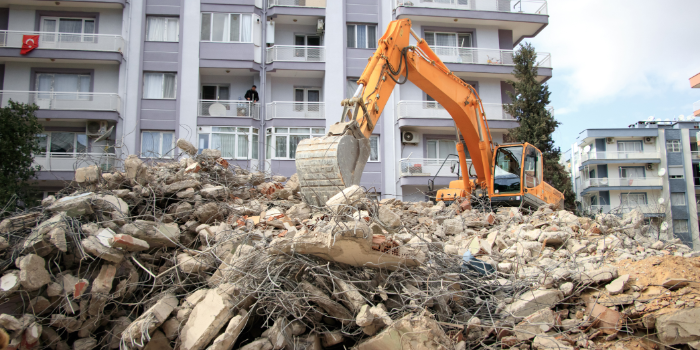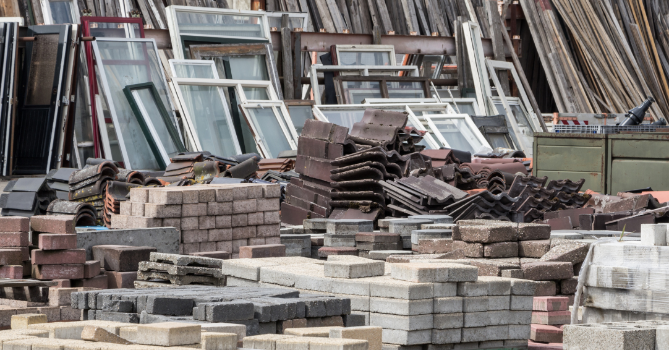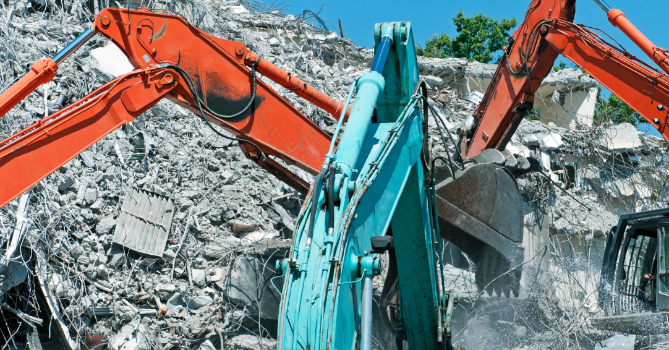
Turning Trash into Treasure: The Role of Waste Materials in Building
In the realm of modern construction, sustainability stands as a paramount concern. With increasing awareness of environmental issues and the urgency to address them, the utilization of waste materials has emerged as a transformative approach towards sustainable building practices. This blog explores the innovative use of waste materials in contemporary construction, shedding light on their cost-effectiveness, environmental benefits, and potential for revolutionizing the industry. By delving into the realm of waste materials, we uncover a world of opportunity where discarded resources find new life as integral components of sustainable structures. Join us on this journey as we navigate through the realm of waste materials in modern construction, uncovering their transformative potential and paving the way for a greener, more sustainable future.
In the dynamic landscape of construction, waste materials have emerged as a promising avenue for sustainable innovation. Traditionally considered as discarded remnants, these materials now play a pivotal role in reshaping the industry's approach towards sustainability. By repurposing waste materials such as hempcrete, concrete sheets, and traditional bricks, construction practices are evolving towards greater environmental consciousness and resource efficiency.
Hempcrete, derived from the hemp plant, offers a lightweight and durable alternative to traditional concrete. Its low carbon footprint and excellent insulation properties make it a popular choice for eco-conscious builders. Concrete sheets, produced from recycled aggregates and fibers, showcase the potential of waste materials in creating durable and versatile building components. Similarly, traditional bricks, when reclaimed and repurposed, contribute to sustainable construction by reducing the demand for new materials.
Through innovative techniques and advancements in construction technology, waste materials are being harnessed to create cost-effective and environmentally friendly solutions. By embracing these materials, construction projects can minimize waste generation, conserve natural resources, and mitigate environmental impact.
As the construction industry continues to prioritize sustainability, the exploration of waste materials opens up new avenues for creativity and efficiency. By harnessing the potential of waste materials, architects, engineers, and builders are driving positive change towards a greener and more sustainable future.
Advantages of Using Waste Materials
1. Cost-Effectiveness: Incorporating waste materials into construction projects can significantly reduce costs associated with purchasing new materials. By utilizing materials that would otherwise be discarded, builders can achieve cost savings without compromising on quality.
2. Environmental Sustainability: One of the primary benefits of using waste materials in construction is its positive impact on the environment. By diverting waste from landfills and incineration, construction practices contribute to waste reduction and promote resource conservation.
3. Energy Efficiency: Many waste materials, such as hempcrete and recycled concrete, offer excellent thermal insulation properties. By improving the energy efficiency of buildings, these materials help reduce energy consumption for heating and cooling, resulting in lower utility bills and reduced carbon emissions.
4. Durability and Strength: Contrary to common misconceptions, waste materials can often exhibit comparable or even superior durability and strength compared to conventional building materials. For example, recycled concrete aggregates can offer similar structural performance to traditional concrete, while reducing the environmental impact.
5. Versatility and Adaptability: Waste materials come in a variety of forms and compositions, making them highly versatile and adaptable to different construction needs. Whether used as structural elements, insulation, or decorative finishes, these materials offer architects and builders a wide range of options for creative expression and design flexibility.
6. Regulatory Compliance: As governments worldwide enact stricter regulations to promote sustainable construction practices, using waste materials can help builders meet compliance requirements and obtain green building certifications. Projects incorporating recycled and reclaimed materials may qualify for incentives and subsidies aimed at promoting environmental stewardship.
7. Social Impact: Beyond the environmental and economic benefits, the use of waste materials in construction can have positive social implications. By supporting local recycling industries and fostering community engagement in sustainable initiatives, construction projects contribute to the broader goal of building resilient and inclusive communities.
Overall, the advantages of using waste materials in construction extend far beyond immediate cost savings. By embracing these materials, builders can enhance the sustainability, efficiency, and resilience of their projects while promoting a more environmentally conscious approach to building design and construction.

Challenges and Solutions
1. Quality Assurance: One of the main challenges of using waste materials in construction is ensuring consistent quality and performance. Variability in composition and characteristics of waste materials can pose risks to structural integrity and durability. Implementing rigorous quality control measures, such as material testing and certification standards, can help mitigate these risks and ensure compliance with industry regulations.
2. Limited Availability and Supply Chains: Another challenge is the limited availability and reliability of supply chains for waste materials. Unlike conventional building materials, which are mass-produced and readily available, sourcing sufficient quantities of waste materials may require coordination with multiple suppliers and recycling facilities. Building strong partnerships with local recycling centers and waste management companies can help establish reliable supply chains and ensure consistent access to materials.
3. Technical Expertise and Training: Integrating waste materials into construction projects may require specialized knowledge and skills that are not commonly taught in traditional construction training programs. Providing technical training and education to architects, engineers, and construction workers on the proper handling, processing, and installation of waste materials can enhance their confidence and competence in utilizing these materials effectively.
4. Regulatory Barriers: Regulatory barriers and permitting requirements may present obstacles to the widespread adoption of waste materials in construction. Building codes and zoning regulations may need to be updated to accommodate the use of unconventional materials, while environmental regulations may impose additional restrictions on the handling and disposal of waste materials. Engaging with regulatory authorities and advocating for policy reforms that support sustainable construction practices can help overcome these barriers and create a more conducive environment for innovation.
5. Public Perception and Acceptance: Finally, overcoming public perception and acceptance of waste materials in construction is essential for widespread adoption. Educating stakeholders, including clients, developers, and the general public, about the benefits and safety of using waste materials can help dispel misconceptions and build trust in sustainable construction practices. Demonstrating successful case studies and showcasing innovative projects that showcase the potential of waste materials can also help change attitudes and promote acceptance within the industry and the community.
Successful Implementation
1. The Edge, Amsterdam, Netherlands: The Edge, a sustainable office building in Amsterdam, exemplifies successful implementation of waste materials in construction. Designed by PLP Architecture, the building features a façade made from recycled materials, including aluminum and glass. The innovative use of recycled materials not only reduced the environmental impact of the project but also contributed to its aesthetic appeal. The Edge has received numerous awards for its sustainability features and has become a benchmark for green building practices worldwide.
2. Masdar City, Abu Dhabi, UAE: Masdar City is a pioneering sustainable urban development project in Abu Dhabi, United Arab Emirates. Designed to be a model for carbon-neutral living, Masdar City incorporates waste materials into its construction processes to minimize environmental impact. For example, recycled concrete and reclaimed wood are used extensively in building construction, while recycled glass is incorporated into paving materials. By embracing waste-to-resource principles, Masdar City demonstrates how innovative design and planning can create vibrant, sustainable communities for the future.
3. The Bullitt Center, Seattle, USA: The Bullitt Center, located in Seattle, Washington, is a groundbreaking example of sustainable architecture and construction. Built using locally-sourced, non-toxic materials, including salvaged wood and recycled steel, the Bullitt Center achieves net-zero energy and water consumption. Waste materials such as reclaimed timber from demolished buildings and salvaged steel from decommissioned structures were carefully selected and repurposed to minimize environmental impact. The Bullitt Center has garnered international acclaim for its innovative design and commitment to sustainability, serving as a model for future high-performance buildings.
4. Waste House, Brighton, UK: The Waste House, located at the University of Brighton in the United Kingdom, is an experimental building constructed almost entirely from waste materials. Designed by BBM Sustainable Design, the Waste House showcases the potential of waste-to-resource construction methods. Recycled materials such as discarded bricks, timber offcuts, and salvaged insulation were sourced locally and transformed into functional building components. The Waste House serves as a living laboratory for sustainable design and has inspired architects, engineers, and students to explore innovative approaches to waste reduction in construction.

Future Trends and Innovations
1. Circular Economy Integration: One of the emerging trends in sustainable construction is the integration of circular economy principles. This approach focuses on reducing waste and maximizing resource efficiency by designing buildings and infrastructure with materials that can be reused, recycled, or repurposed at the end of their lifecycle. Future innovations may include the development of modular construction systems that facilitate disassembly and the use of advanced recycling technologies to transform waste materials into new building components.
2. Advanced Materials Research: Researchers and scientists are continually exploring new materials and construction techniques that offer improved sustainability performance. Innovations in bio-based materials, such as mycelium-based composites and bioplastics, hold promise for reducing the environmental impact of construction while enhancing structural integrity and performance. Additionally, advancements in nanotechnology and 3D printing are enabling the production of high-performance building materials with minimal waste and energy consumption.
3. Smart Building Technologies: The integration of smart building technologies is expected to play a significant role in the future of sustainable construction. IoT (Internet of Things) sensors, data analytics, and automation systems can optimize building performance, energy efficiency, and occupant comfort. Future innovations may include the development of intelligent building envelopes that dynamically respond to environmental conditions, as well as the use of predictive maintenance algorithms to minimize energy consumption and reduce operational costs.
4. Biophilic Design Principles: Biophilic design, which incorporates elements of nature into the built environment, is gaining traction as a strategy for promoting health and well-being in buildings. Future trends may involve the widespread adoption of biophilic design principles, such as natural ventilation, daylighting strategies, and green infrastructure integration, to create healthier and more sustainable indoor environments. Additionally, innovative biomimetic designs inspired by nature's principles may lead to the development of buildings that actively contribute to ecosystem restoration and biodiversity conservation.
In conclusion, the utilization of waste materials in modern construction represents a transformative approach to sustainability. By repurposing and recycling materials that would otherwise end up in landfills, we can reduce environmental impact, lower construction costs, and create healthier built environments. Despite the challenges associated with sourcing, processing, and implementing waste materials, innovative solutions and technological advancements offer promising opportunities for overcoming these obstacles. Through case studies showcasing successful implementations and ongoing research into future trends and innovations, it is evident that waste materials have the potential to revolutionize the construction industry. As we move forward, collaboration among stakeholders, investment in research and development, and a commitment to sustainable practices will be crucial in realizing the full potential of waste materials in construction and building a more resilient and environmentally friendly built environment for future generations.